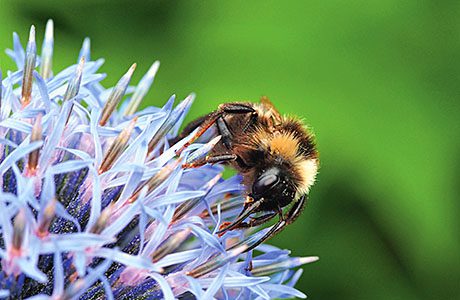
A new meta-analysis of the systemic pesticides neonicotinoids and fipronil (neonics) confirms that they are causing significant damage to a wide range of beneficial invertebrate species and are a key factor in the decline of bees.
Concern about the impact of systemic pesticides on a variety of beneficial species has been growing for the last 20 years but the science has not been considered conclusive until now.
Undertaking a full analysis of all the available literature (800 peer reviewed reports) the Task Force on Systemic Pesticides – a group of global, independent scientists – has found that there is clear evidence of harm sufficient to trigger regulatory action.
The analysis, known as the Worldwide Integrated Assessment (WIA), to be published* in the peer reviewed Journal Environment Science and Pollution Research, finds that neonics pose a serious risk of harm to honeybees and other pollinators such as butterflies and to a wide range of other invertebrates such as earthworms and vertebrates such as birds
The effects of Neonics explosure range from instant and lethal to chronic. Even long term exposure at low (non-lethal) levels can be harmful. Chronic damage can include: impaired sense of smell or memory; =altered feeding behaviour and reduced food intake including reduced foraging in bees; and increased susceptibility to disease.
One of the lead authors of the WIA, Dr Jean-Marc Bonmatin of The National Centre for Scientific Research in France said: “The evidence is very clear. We are witnessing a threat to the productivity of our natural and farmed environment equivalent to that posed by organophosphates or DDT. Far from protecting food production the use of neonics is threatening the very infrastructure which enables it, imperilling the pollinators, habitat engineers and natural pest controllers at the heart of a functioning ecosystem.”






